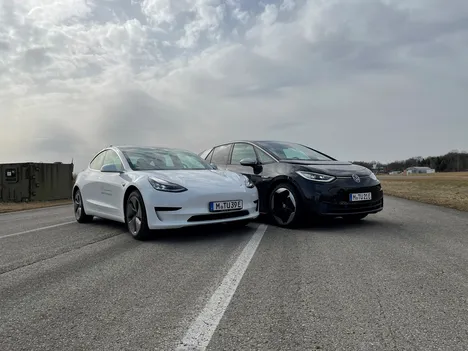Electromobility is considered a sustainable mobility concept due to its environmental friendliness. However, in 2020, only 8 % of newly registered motor vehicles in Germany were equipped with a purely electric powertrain. Energy efficiency plays a particularly important role in electric vehicles. Higher efficiency manifests itself in an increasing range with the same battery capacity. The range continues to significantly influence customer acceptance and purchase decisions for battery-powered vehicles. Manufacturers' consumption and range figures are determined with the help of standard cycles (WLTP, FTP) and often do not cover real user behaviour. This makes it difficult for potential customers to make a statement about the realistic range for them. In addition to range anxiety, there is a great deal of customer uncertainty with regard to the durability of the vehicles' energy storage systems. Depending on the driving style, capacity and range losses can occur sooner or later due to battery ageing. These uncertainties make the German government's goal of allowing seven to ten million electric vehicles in Germany by 2030 extremely difficult.
Goal
The aim of the project is to determine real-world ranges and efficiencies of mass-produced electric vehicles under realistic conditions. The focus is on the realistic investigation of electric series vehicles with regard to range, efficiency and sustainability. The focus of the measurements is on the use of representative driving cycles, which are recorded in real road operation. In addition, common driving cycles such as the WLTC and FTP-75 cycles are examined. The vehicles will be examined in more dynamic, realistic driving profiles with higher accelerations at various speed levels. In a further step, in addition to complete vehicle tests and component tests, fast charging tests will also be carried out in order to be able to make statements about the durability of the battery in addition to its efficiency.
Various cycle dynamics are to be evaluated with regard to the aforementioned criteria and the individual advantages and disadvantages of vehicles in certain driving scenarios are to be analysed. This will be done in combination with research into the current state of the art and common test and comparison procedures for electric vehicles. In addition to real drives, which are carried out in road traffic and analyse the environmental influences in more detail, chassis dynamometer tests will be collected in order to establish comparability between the vehicles. The final goal of the project is to identify possible optimisation potentials for the vehicles and to make suggestions for improvement.
Implementation

